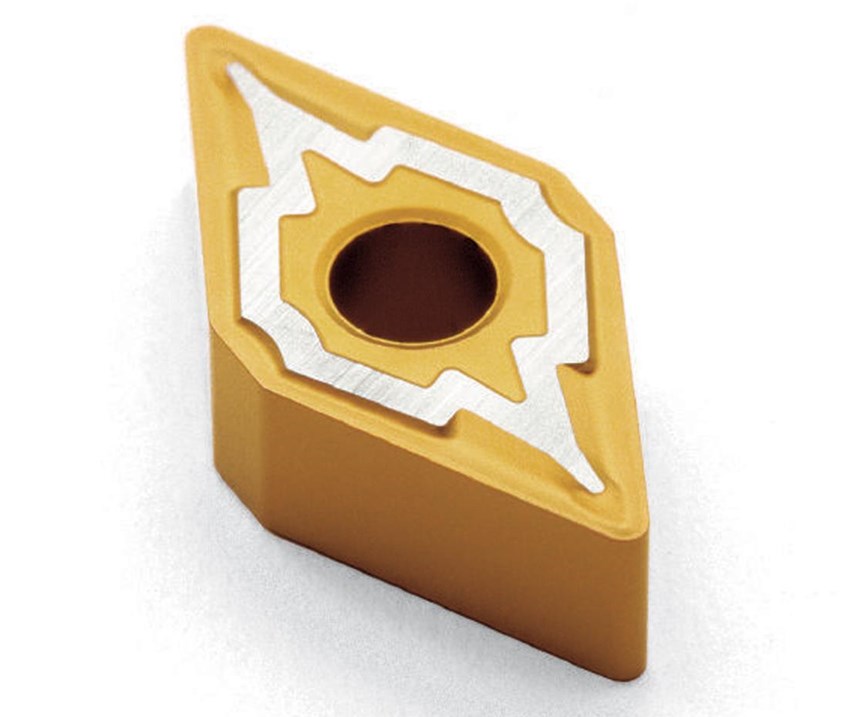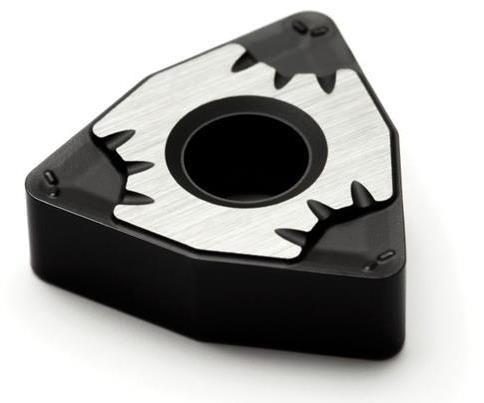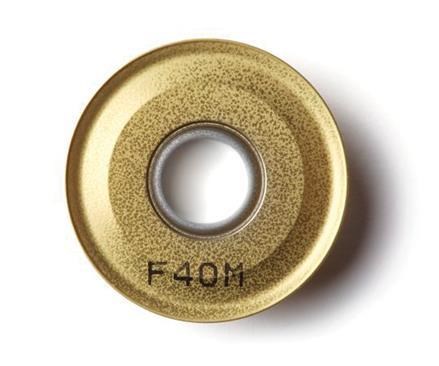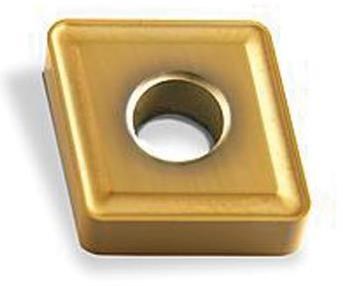A Guide to Insert Coating Processes and Materials
Few materials have had a greater impact on our economy and industrialized culture than cemented tungsten carbide.
Few materials have had a greater impact on our economy and industrialized culture than cemented tungsten carbide. Hard and wear-resistant, this material is used for products as interesting and varied as ballpoint pen balls, fishing rod guide rings, wear parts, dental drill bits, armor-piercing shell cores and, most significantly, cutting tools.
In fact, coated cemented carbides are the most widely used cutting tools on the market. After all, they bring high levels of productivity to the manufacturing process, which in turn, makes many of the products used every day more affordable. However, with the array of advanced coating processes and coating materials, it’s not always easy to determine the best insert grade for a given application.
The best place to start the selection process is with the workpiece material because the type of material being machined plays a key role in determining whether or not a coated or uncoated carbide insert is needed.
Coated carbide inserts are a must for working with ferrous materials such as iron, cast iron, steel or stainless steel. When machining super alloys, it’s best to use a coated insert most of the time, especially when cutting alloys with medium to high machinability ratings. Titanium alloys also benefit with coatings, especially when not using high-pressure coolant.
Uncoated carbide inserts are ideal for applications involving non-ferrous materials, such as aluminum. In fact, because aluminum can be soft and lead to built-up edge, it’s best to make use of an extremely sharp, uncoated cutting edge. Other materials not requiring a coated insert include brasses, bronzes, many composite materials and wood. That said, however, productivity and tool life can be dramatically improved with the use of an appropriate diamond coating.
The insert selection process becomes tricky when trying to pick the right coating type. After all, every application is different, and both the coating processes and coating materials must be taken into consideration. And, while there is no simple answer to “How do I choose the right insert coating?” understanding coating processes and coating materials help take some of the ambiguity out of the selection process.
Chemical Vapor Deposition (CVD) and Physical Vapor Deposition (PVD) are the two main coating processes for carbide inserts, each one providing interesting features and benefits. CVD coatings are thick (typically 9 – 20 microns) and highly wear resistant, making them especially useful for steel and cast iron machining as well as widely used in turning operations.
Unfortunately, however, such thick coatings can compromise edge toughness. PVD coatings are thin (typically 2 – 3 microns) yet tougher and typically smoother than CVD coatings. Consequently, they are useful for machining materials, such as superalloys, titanium alloys and difficult-to-machine stainless steels, that typically notch or chip cutting edges.
Chemical Vapor Deposition (CVD) Coatings
CVD-coated inserts work well in turning, milling and drilling applications involving ferrous materials. In fact, CVD-coated inserts are recommended over PVD-coated inserts for turning, milling or drilling steels and cast irons.
Characteristics of CVD Coating Types:
TiN Coatings:
• Excellent build-up edge resistance
• Excellent on gummy materials
• Excellent for threading and cutoff operations
• Makes it easy to identify what insert corners have
been used
• Effective at lower speeds
TiC Coatings:
• Excellent wear resistance
• Effective at medium speeds
• Excellent on abrasive materials
Al203 Coatings:
• Excellent crater resistance
• Effective at high speeds and high heat conditions
Physical Vapor Deposition (PVD) Coatings
PVD-coated inserts are especially useful for turning, milling and drilling applications involving high-temperature alloys, titanium alloys and stainless steel. PVD-coated inserts are recommended when turning high-temperature alloys; however, if the alloy is on the softer side and can be machined at higher speeds, a CVD coating is preferred.
Characteristics of PVD Coating Types:
TiN Coatings:
• Excellent built-up edge resistance
• Broad application range
• Effective on high-temperature alloys
• Effective on stainless steels
TiCN Coatings:
• Harder than TiN coatings
• Effective on end mills
• Sometimes used in milling applications
where the work material is abrasive
TiAIN Coatings:
• Harder and more stable than other PVD coating types
• Becomes harder and more stable with time
• Effective on high-temperature alloys and stainless
steels
• Effective on abrasive irons at lower speeds
This is just the tip of the iceberg when it comes to information involving CVD and PVD-coated inserts. Most cutting tool vendors offer numerous coating and substrate combinations and can help a shop choose the right insert grades for their jobs.
Related Content
Shop Sets its Sights on Precise Tool Alignment
A Wisconsin shop has found that visual tool alignment technology has improved tool life and surface finishes for its Swiss-type lathes while increasing throughput as well.
Read MoreNew Cutting Tool Technology Discovered at Paul Horn Open House
During a tour of the company’s campus in Tubingen, Germany, I and more than 3,000+ others were introduced to a number of new advances the company has made in cutting tool technology particularly as it relates to the medical industry.
Read MoreRepeatability and Rigidity Are Key for Quick-Change Swiss Tooling
A rotary wedge clamping system is said to enable this two-piece, modular tooling system for Swiss-types to offer the performance of a solid tool.
Read MoreBoring Head Enables Sculpture Hardware to Be Machined on a Lathe
When small job shop Ansonia Manufacturing took on a tricky hardware component job for a “live” glass art sculpture, it realized a boring head would be needed to machine the part complete on its live-tool lathe.
Read MoreRead Next
5 Aspects of PMTS I Appreciate
The three-day edition of the 2025 Precision Machining Technology Show kicks off at the start of April. I’ll be there, and here are some reasons why.
Read MoreEmerging Leaders Nominations Now Open
Here’s your chance to highlight a young person in your manufacturing business who is on the path to be a future leader moving your company forward.
Read MoreDo You Have Single Points of Failure?
Plans need to be in place before a catastrophic event occurs.
Read More















.png;maxWidth=300;quality=90)










